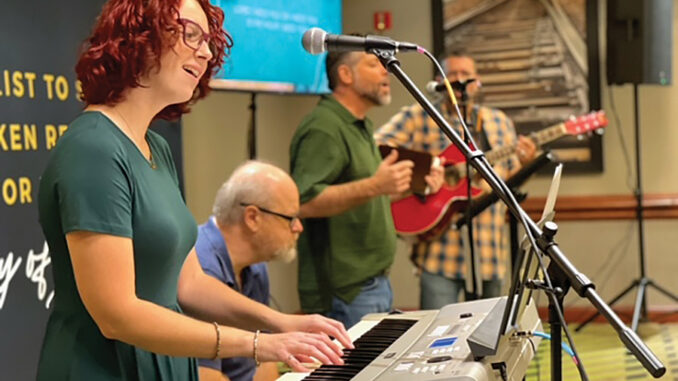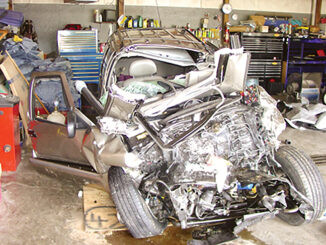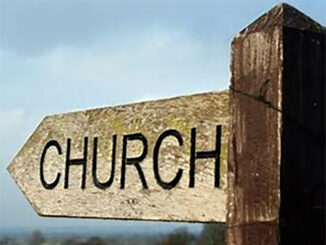
We all have our personal list of attractions, businesses and amenities we think Bowling Green needs more of. Maybe for you it’s a specific restaurant (Shake Shack, anybody?) or a local joint you wish would add a location on your side of town (looking at you, Spencer’s…). What if I told you that while I love those answers, my passion is to see new churches started in Bowling Green?
Regardless of your personal preferences and biases, I’d guess very few of you would answer that Bowling Green needs more churches. After all, there are churches on every corner. We have big churches, small churches, traditional churches, trendy churches, college churches, country churches, international churches, neighborhood churches, just about any kind of church you could think of. So why in the world would somebody like me move to Bowling Green for the sole purpose of starting another church?
First of all, the whole idea of “we don’t need new churches” is an incorrect assumption, according to statistics and population trends. If the entirety of Warren County decided to go to church this Sunday, we don’t have enough seats and services to accommodate those people. And because of Bowling Green’s population growth, that gap will only widen in the coming years without new churches. This growth has also seen previously rural parts of our county become densely populated suburban neighborhoods, leaving those areas underserved by the local church.
Secondly, multiplication is central to the mission and identity of the church. The New Testament is full of examples of church planting. Paul and Peter, to name a couple of well-known Apostles, both planted churches. However, none of the churches they planted still exist. (Have any of you been invited to the Church at Crete lately?) Local congregations are living organisms; they’re born, they grow, they reproduce and they die. The only way we prevent our “population” of churches from dying off is to reproduce.
Ultimately, we plant churches because church planting works. The best way to reach new populations and new people is with new churches. Once a church reaches 10 years of age, statistics tell us that 80% of their growth comes from transfer membership (people coming from other churches). Churches under ten years of age, on the other hand, see approximately 80% of their growth from people previously unaffiliated with any church. So IF our goal is to reach new people, the best way to do that is by constantly starting new churches.
With that in mind, my family and I, along with a small group of Christ followers, joined together in 2021 to start Mosaic Church. We didn’t start Mosaic because we have something our sister churches here in Bowling Green don’t or because we’re doing something right that everybody else is doing wrong. We love the existing churches in Bowling Green and many of them have been huge supporters and allies of Mosaic. Mosaic Church exists to see the broken redeemed for the glory of God. We’re simply starting a new church hoping to reach new people and see a movement of reproducing churches here in the SOKY region. Our goal is not to become a large church, but a multiplying church that helps people meet, know and follow Jesus.
So what does Mosaic Church look like? What makes Mosaic different from the hundreds of other churches in the area?
Honestly, not much. Our “what” and our “why” are the same as a lot of other churches. Our “how,” on the other hand, is a little unique. We gather in two contexts: Sunday Worship and House Churches. Sunday Worship you’re probably familiar with. We sing, pray, take communion and teach from the Bible. We may do a few things differently, but for the most part it’ll look somewhat familiar to anybody with a church background.
House Churches may be a more confusing term. We believe the Church is a people, not a place, and wherever the people of God may gather for his glory, the church is there. Our House Churches are where the life of our church happens. Once a week, groups of believers gather in homes/parks/restaurants to share coffee, laughs, burdens and pray for one another. They serve their community together. They serve each other. This is where the “let’s take meals to the family welcoming a new child” or the “let’s plan a cookout and invite the neighborhood” part of church happens.
What we’ve found is these House Churches are the parts of church many people desire the most. Think about April/May of 2020. When everything shut down and society went fully online, what most of us missed the most wasn’t being in huge crowds or hearing sermons and lectures live and in-person. What we missed most was community, relationships and togetherness. Not everybody thinks they need God, but after the last 18 months I think we’ve learned that we all need each other.
If you’re looking to re-engage in church, have questions about faith, want to be part of a church planting movement, or simply want some real, genuine community, check us out online at mosaicbg.church or on Facebook at Mosaic Church BG.
-by Tyler Toon
Lead Pastor, Mosaic Church





